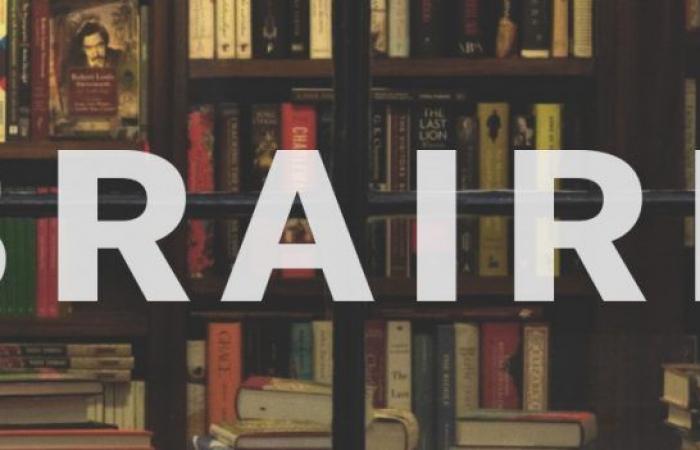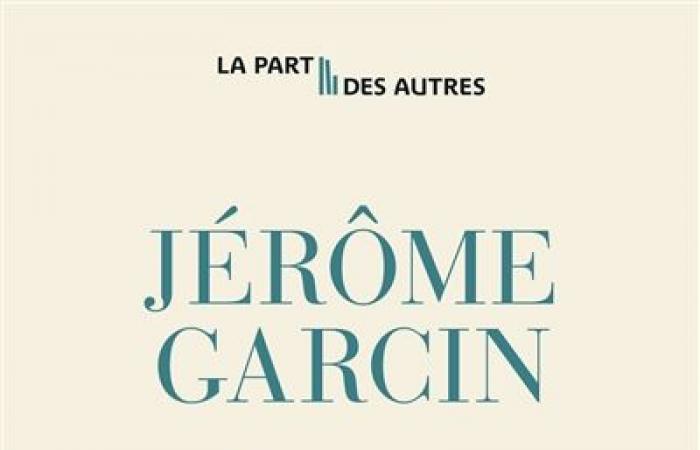Every week, we invite you to read something new, a classic or a book to rediscover.
While his very beautiful story My fragile has just been published in paperback, Jérôme Garcin publishes the essay Words and actions subtitled “ Belles-lettres under the Occupation “. Way of thinking about how “ the exercise of literature can lead to insubordination as well as submission, to bravery as well as cowardice “, this collection of texts is structured and justified around a powerful paradox: “ Literary France never ceases to swoon over collaborationist writers and concedes to those who resisted, often died as a result, and whose works are indifferent, a bored, stiff, somewhat embarrassed esteem. » Thus follow evocations of Céline, Brasillach or the infernal tandem Morand and Chardonne – “ the knights of gall », « two smart with the enemy », « two immoral moralists » – whose posthumous publication of their correspondence will have completely dishonored them.
Jérôme Garcin © F. Mantovani / Gallimard
Faced with these, the author of The Fall of a Horse (Roger Nimier Prize 1998) and Bleus horizons opposes other figures such as those of Jean Prévost, who died on 1is August 1944, arms in hand in the Vercors facing the Germans, or Jacques Lusseyran – two writers to whom he had already paid his debts through beautiful books (For Jean PrévostGallimard, 1994 ; The SeerGallimard, 2015).
Gray areas
Of course, we did not wait for Jérôme Garcin to know that Céline, Brasillach, Paul Morand and others had been odious anti-Semitic collaborators. But one of the merits of his book is that of a clarification, of a reminder. Since the 1970s, the Vichy and Occupation period has been reviewed by historians, writers and filmmakers, constantly enriched with new contributions and new testimonies. The Gaullo-communist story of the immediate post-war period (“All the resisters”) was followed by the guilt-inducing (“All collaborators”), in the wake of Vichy France by the American historian Robert Paxton, before a more nuanced discourse became necessary around the gray areas, the complexity and the ambivalence of situations so easy to judge fifty or eighty years later by those who do not had not lived.
It was thus admitted that destinies could have been sealed on a roll of the dice, a detail, a chance. Some novels by Patrick Modiano, the film Lacombe Lucien by Louis Malle (scripted by Modiano), the documentary Grief and Pity by Marcel Ophüls or later the revelations about the past of François Mitterrand (decorated with the Francisque by Marshal Pétain before switching to the Resistance while subsequently cultivating friendships with infamous personalities like René Bousquet) – to name but a few they – participated in this rereading, certainly valuable because refusing Manichaeism, which contributed – knowingly or not – to the emergence of a certain moral relativism also accompanying the rehabilitation, or at least the new notability, of certain “cursed” figures (including Céline, Drieu and Morand, all three in the catalog of La Pléiade) in the field of letters.
Black and white
Let us remember again that in Ophüls' film, Grief and Pityone of the strongest and “attractive” testimonies is that of Christian de La Mazière, a former Waffen SS with a rocker appearance, justifying his commitment by a sort of “fascist romanticism” (to use Paul's expression Serant). Result: in the wake of the film, La Mazière published a first collection of memoirs, The Helmeted Dreamer published by Robert Laffont, evoking his career and his feats of arms in the SS, which became a bestseller. In fact, over the years, the idea emerged that during these unreasonable times, everything was more or less equal. The heroes, the cowards, the bastards, the executioners, the victims: a thin membrane separated all these beings, their choices, their actions. This was sometimes true. Joseph Darnand, multi-medal winning hero of the First War against the Germans, was contacted in 1940 to join La France Libre. If he had accepted, he would not have become a little later the leader of the Militia and the worst incarnation of collaboration with the Nazis.
However, beyond the gray areas, there was also black and white. The collaborators and the resistance fighters from the start, the tortured under the blows of the Nazi schlague and the Gestapists of Rue Lauriston, the deportees and the Militiamen, the Righteous and the informers. And people of letters had their part, with weapons or simply with words which are different, in this battle. Like Jérôme Garcin celebrating Jean Prévost who said “ fight violently for moderate ideas », Jacques Lusseyran or Jules Roy, we could save other writers from oblivion, writers of great talent who also had the bravery to engage in the Resistance. We think of the communist Roger Vailland or the monarchist Jacques Perret. Their novels Funny game, A young man alone (Vailland), Band apart et The Corporal pinned (Perret) remain masterpieces.
Christian Authier
> A book for the weekend
Words and actions • Gallimard









